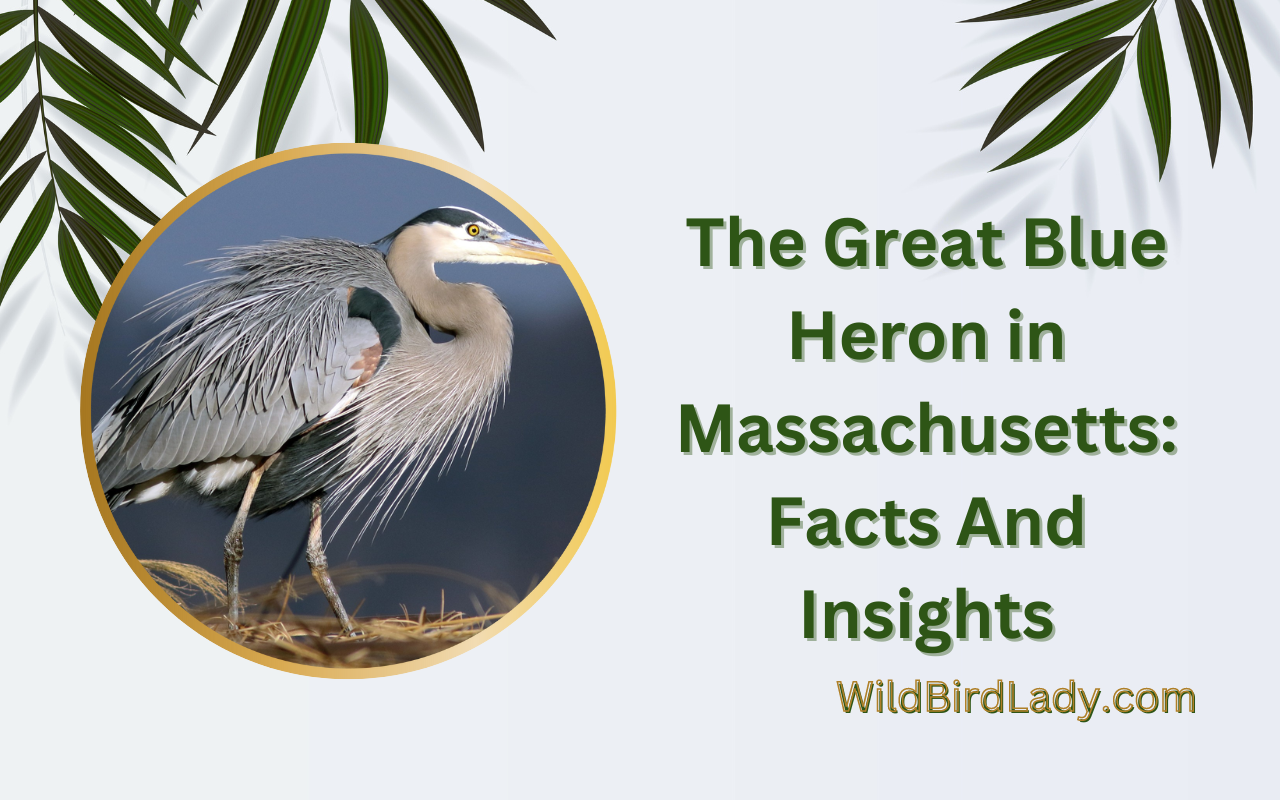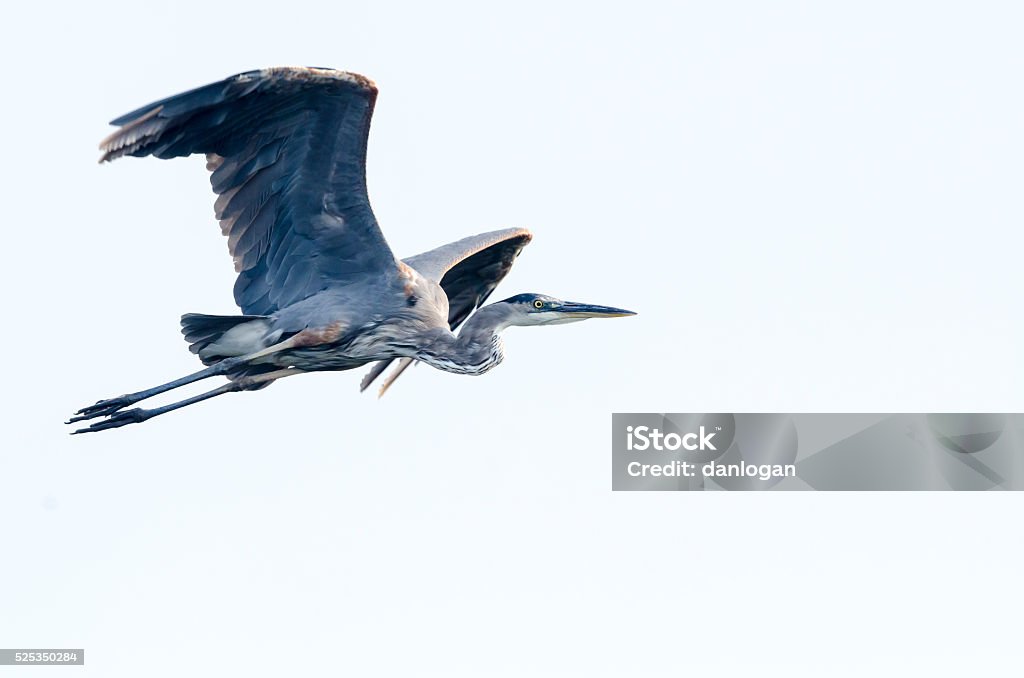The Great Blue Heron in Massachusetts: Facts And Insights
The great blue heron can be found in massachusetts and is a common sight in wetland areas. These majestic birds can stand up to four feet tall and have a wingspan of up to six feet.
The great blue heron is a familiar bird to many residents of massachusetts. These graceful birds can often be seen wading through shallow waters or flying overhead with their long, graceful wings. With their distinctive blue-gray plumage, black stripe over the eyes, and long, pointed beaks, they are easy to spot in the landscape.
But there is much more to these birds than meets the eye. In this article, we will take a closer look at the great blue heron in massachusetts. We’ll explore their habitat, behaviors, and some interesting facts about these magnificent creatures. So, join us as we dive into the world of the great blue heron.
Anatomy And Physical Characteristics Of Great Blue Heron
The great blue heron is a majestic bird that can be found all over the state of massachusetts. With their unique and striking appearance, they are easy to spot and even easier to admire. We will take a closer look at the anatomy and physical characteristics of the great blue heron, focusing on the unique features that allow it to thrive and adapt in massachusetts.
Physiological Nature Of Great Blue Heron
These birds have physical characteristics that make them perfectly suited to life in the wild. Here are some of the key points to know:
- The great blue heron’s body size ranges from 38 to 54 inches, making them one of the largest and most noticeable birds in massachusetts.
- They weigh between 4 and 7 pounds, with males being slightly larger than females.
- Great blue herons have a wingspan of 6 to 7 feet, which allows them to soar gracefully through the sky.
- Their beaks are approximately 5 inches in length, giving them the ability to catch and eat a wide range of prey.
- Great blue herons have long, thin legs that allow them to wade in shallow water with ease.
How Physical Characteristics Help Great Blue Heron Thrive In Massachusetts
The great blue heron’s unique physical characteristics help them thrive in the diverse habitat of massachusetts. Here are some insightful facts:
- Their large size and wingspan help them hunt for fish and other aquatic creatures in rivers, lakes, and marshes.
- The great blue heron’s sharp beak is used to catch fish and other small prey. Additionally, they use their long legs to wade through shallow water and hunt for prey in a stealthy manner.
- These birds are solitary hunters and prefer to fish by themselves, making it easier for them to catch a meal without distractions from other birds.
The great blue heron is a remarkable bird that has adapted to the diverse habitat of massachusetts. They have unique physical characteristics that allow them to thrive in the wild, making them an important part of the state’s ecosystem. Whether you’re a nature enthusiast or just curious about these beautiful birds, learning about their anatomy and physical characteristics is truly fascinating.
Habitat And Distribution Of Great Blue Heron In Massachusetts
Discover The Various Ecosystems And Regions In Massachusetts Where Great Blue Heron Exist
Great blue herons are common birds found in massachusetts, and they can be seen in various ecosystems and regions across the state. Here are a few examples:
- Swamps: Great blue herons are typically found in wetland environments that are rich in nutrients from decomposing plants and animals. Swamps are an excellent habitat for these birds, and they are often observed wading through the water in search of food.
- Marshes: These environments are often a mix of land and water, and they’re home to several species of wildlife, including great blue herons. Marshes contain a lot of vegetation, which provides an abundant food source for these birds.
- Creeks: Great blue herons can also be found near creeks that run through forests. These waters provide a reliable source of fresh water for the birds and a habitat for fish that they feed on.
- Wetlands: Great blue herons prefer habitats with shallow open waters, which are ideal for hunting. Wetlands can provide such habitats and also offer excellent cover from predators.
- Rivers: Great blue herons are known to frequent rivers, which provide an abundant source of food for them. Rivers are also important for their migration patterns.
Types Of Habitats Preferred By Great Blue Heron
Great blue herons are versatile birds and can adapt to various habitats, although they prefer some environments over others. Here are some types of habitats preferred by great blue heron:
- Shallow water habitats: These habitats allow great blue herons to hunt and wade through the water to catch prey easily. Shallow environments are typically rich in aquatic vegetation, which provides an abundant source of food for the birds.
- Forested areas: Great blue herons are known to roost in trees, and forested areas provide excellent nesting grounds for the birds. Moreover, they offer cover from predators and other disturbances.
- Open lands: Great blue herons can feed on small mammals, reptiles, and insects in open fields, as long as there is suitable water nearby. These birds also need open areas with minimal tree cover for good visibility.
Great blue herons are fascinating birds that prefer wetland environments with shallow waters and abundant food sources. They can be found in various regions of massachusetts, such as swamps, marshes, creeks, wetlands, and rivers. By understanding their preferred habitats and ecosystems, it’s possible to spot them more easily and appreciate their beauty.
Feeding Behavior And Diet Of Great Blue Heron In Massachusetts
The great blue heron is a majestic bird that can be found throughout massachusetts, particularly near bodies of water such as lakes, ponds, and rivers. The great blue heron’s unique feeding behavior and diet, make it an intriguing bird to observe.
Here are some insights into their feeding strategy and how they compete for food in massachusetts.
Insight Into The Great Blue Heron’S Feeding Strategy
- The great blue heron uses a variety of hunting strategies to capture its prey. Some of the common techniques include standing still in shallow water to wait for fish to swim by, or walking slowly along the shorelines and streams in search of small aquatic prey.
- Great blue herons have specialized neck vertebrae that allow them to quickly strike out and catch prey with their long beaks. They often swallow their prey whole, and if it is particularly large, they may need to manipulate it before swallowing.
- The great blue heron’s sharp eyesight and excellent hearing make it a formidable hunter, enabling it to locate prey even in murky waters or thick vegetation.
How The Great Blue Heron Competes For Food In Massachusetts
- The great blue heron is not the only bird in massachusetts that hunts for fish and other aquatic prey. However, it has a competitive edge due to its size and hunting techniques. Its long legs and neck allow it to reach deeper into the water than many other birds, and its swift movements make it difficult for prey to evade capture.
- While the great blue heron has a wide variety of prey items it can consume, it is specifically adapted to hunt fish. This can be problematic, as humans also rely heavily on fish as a food source. As overfishing and habitat destruction continue to diminish fish populations in massachusetts, the great blue heron’s food supply is threatened.
- In addition to human encroachment on fish populations, great blue herons also face competition from other bird species. For example, the great egret often feeds on the same types of prey as the great blue heron. However, the great blue heron tends to be more successful in hunting, making it the top competitor for food.
Overall, the great blue heron plays an essential role in the ecosystem as an ecological barometer. Its feeding habits and diet offer valuable insights into the health of massachusetts’ waterways, while its competitive edge highlights the ongoing struggle to maintain ecological balance in the face of human activity.
Migration Patterns Of Great Blue Heron In Massachusetts
The great blue heron is a majestic bird species that boasts impressive physical characteristics. Its wingspan can reach up to six feet, and it typically stands around four feet tall. The great blue heron is widely known across massachusetts for its awe-inspiring beauty, but what many people may not know is that it also has intriguing migratory habits.
This article aims to provide insights into the migration patterns of the great blue heron in massachusetts and how they relate to its growth.
The Migratory Habits Of Great Blue Heron From Massachusetts And How They Relate To Its Growth
The great blue heron in massachusetts has a unique migratory pattern that is linked with its quest for survival and growth. These birds have adapted to migrate in search of better breeding conditions, food sources, and favorable weather. Here are some key points to consider:
- The great blue heron in massachusetts migrates to breeding grounds in late winter and early spring.
- During breeding season, these birds can be found in large colonies that can contain several dozens of other herons at once.
- Great blue herons begin to migrate southwards in late summer and early fall.
- During migration, these birds travel in flocks along the coast to south america and the caribbean before returning to massachusetts in the spring.
The great blue heron’s migratory habits are thought to play an essential role in their survival and growth. For instance, breeding herons gain access to more plentiful food sources and nesting grounds in southern regions. Migration also allows these birds to escape unfavorable weather conditions that can occur during the winter months in massachusetts.
Discover Regions In North And South America That Great Blue Heron Migrates From And To During Specific Times Of The Year.
The great blue heron migrates to breeding grounds as far south as florida and stretches across to the caribbean islands. Here are some key points to consider:
- In the northern hemisphere, breeding sites for the great blue heron are found in alaska, canada, and the contiguous united states.
- During the winter months, non-breeding herons can be found in central america and mexico, while others go as far as peru and argentina.
- In the southern hemisphere, great blue herons breed in chile, argentina, and the falkland islands.
The great blue heron’s migratory habits provide an essential insight into how these birds have adapted to survive and grow. Their large scale migration from massachusetts to south america and the caribbean allows them to access more bountiful food sources and avoid harsh weather conditions.
Understanding these migratory patterns is crucial for conservation efforts to protect this magnificent species for future generations.
Current Conservation Status Of Great Blue Heron In Massachusetts
The great blue heron is a majestic bird that is a common sight in massachusetts. These magnificent birds with wingspans of up to six feet are a popular attraction for many bird enthusiasts, nature photographers, and tourists visiting massachusetts. However, despite their widespread popularity, great blue herons’ current conservation status is quite alarming.
In this section, we will highlight the great blue heron’s conservation status and how it can help protect the species.
Here are the key points to keep in mind about the current status of great blue herons in massachusetts:
- Great blue herons are not officially listed as endangered, threatened, or of concern in massachusetts. However, their population has decreased over the years, making them a species of conservation concern.
- The massachusetts division of fisheries and wildlife has implemented a monitoring program to assess the state’s heron population. This program’s main aim is to gather information that will help in managing heron populations and protecting their habitats.
- Threats to great blue heron populations in massachusetts include habitat loss, climate change, pollution, and illegal hunting. Habitat loss is a significant threat to massachusetts heron populations, mainly from the development of the coastal areas where they nest.
- The great blue heron is federally protected under the migratory bird treaty act, which prohibits certain activities that can harm or kill migratory birds. This act helps in protecting great blue herons during the breeding season.
How Protecting The Great Blue Heron Can Help The Species
Here are the key points to keep in mind about how protecting the great blue heron helps the species:
- Protecting great blue herons will help in protecting other wildlife that share their habitats, such as fish, amphibians, and reptiles. Moreover, they play a critical role in controlling fish populations in wetlands, reducing competition for resources among other fish species.
- Conserving great blue heron habitats can help in mitigating the impacts of climate change. Due to their sensitivity to changes in their environment, great blue herons are seen as indicators of wetland health. Therefore, their presence in wetlands suggests that wetlands are functioning correctly and providing other important ecological services.
- Protecting great blue heron habitats can also have economic benefits. Millions of dollars are generated annually through tourism and outdoor recreation activities related to great blue herons. By protecting their habitats, we can ensure that these activities continue while also conserving the species.
Protecting great blue herons and their habitats has significant ecological, economic and social benefits. It is, therefore, essential that protective measures are put in place to ensure their survival for future generations to come.
Frequently Asked Questions Of The Great Blue Heron In Massachusetts: Facts And Insights
What Is The Great Blue Heron’S Diet In Massachusetts?
The great blue heron in massachusetts feeds on fish, frogs, insects, snakes and small mammals. They wait patiently in shallow waters and catch their prey in a flash.
Where Do Great Blue Herons In Massachusetts Nest?
Great blue herons in massachusetts typically nest in trees, near water bodies or on the ground. They prefer quiet and undisturbed areas to build their nests.
What Is The Size Of The Great Blue Heron In Massachusetts?
The great blue heron in massachusetts can grow up to 5 feet tall, with a wingspan of approximately 6 feet. They are the largest heron in north america.
Are Great Blue Herons In Massachusetts Migratory Birds?
Yes, great blue herons in massachusetts are migratory birds. They usually migrate to warmer areas during late fall and return in early spring.
How Do Great Blue Herons In Massachusetts Communicate?
Great blue herons in massachusetts communicate through various behaviors such as squawks, preening, bill clacking, and flight patterns. They also use visual displays to communicate.
Conclusion
The great blue heron is one of the most captivating and graceful birds in massachusetts. Its majestic appearance, striking colors, and ability to adapt to various habitats make it a valuable addition to the state’s wildlife. Through various facts and insights, we have explored the many unique characteristics of this avian species, including its diet, behavior, and habitat preference.
We’ve learned that the great blue heron plays a vital role in the ecosystem of wetlands and is an indicator species of aquatic health. Its conservation is essential to maintain the balance of the ecosystem. From its remarkable beauty to its significant ecological importance, the great blue heron is a true marvel of nature.
So next time you’re out and about in massachusetts, keep an eye out for this magnificent bird and appreciate all it adds to our shared environment.







